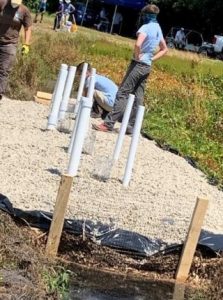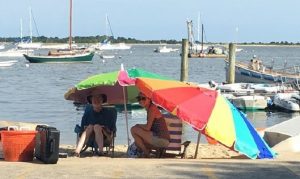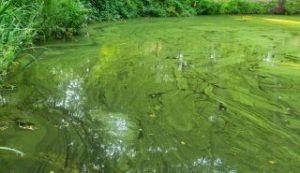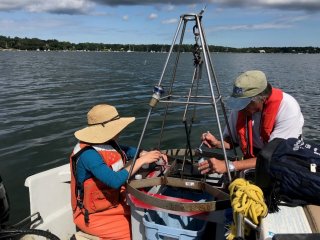With a better understanding of the causes and effects associated with environmental concerns, there is a need for better communication of research findings across people, regions, and cultures. The goal for making research easier to understand stems from concerns such as public health and the environment.1 Environmental researchers at agencies like the United States Environmental Protection Agency (USEPA) evaluate the effects of air pollution on children’s health, with the assistance of social scientists from the fields of public health, sociology, and other disciplines.2 For many environmental projects, there is plenty of information out there for everyone to read through, but there is evidence that those in the areas of concern who are likely to be most affected do not always have a clear understanding of potential environmental impacts.3 Therefore the USEPA’s Office of Research and Development (ORD) is studying how social sciences can help shape environmental research, and how they can change the way that community members and stakeholders understand the research process and its results.
In a previous study of a proposed Massachusetts offshore wind farm known as Cape Wind, social acceptance was not taken into consideration during the project planning process.4 Planned for Nantucket Sound off the south coast of Cape Cod, researchers believed that there would be overall acceptance of the Cape Wind project.5 However, stakeholders expressed concern with the financial need to fund the project during an economic downturn in the area, and its potential effects on tourism in the area.6 Originally proposed in 2000, the project faced 15 years of social opposition and ultimately ran out of both money and time.6 The Cape Wind project was put to rest in 2016 after years of the community resistance, but its failure emphasized the need to consider social perspectives as a part of the planning process.8
The USEPA’s Atlantic Ecology Division is one of the many agencies that have established teams of social scientists and environmental scientists to work hand-in-hand on environmental research projects.9 Social scientists with specializations in fields such as anthropology, economics, geography, political science, and sociology, are working on studies such as those taking place in Cape Cod, Massachusetts (figure 1).10 The focus of these environmental projects is to identify ways to manage water more effectively, and decrease damage to surrounding areas.11 To evaluate the influence social sciences had on the study, teams collected data to assess the level of understanding of stakeholders (those most affected by the project) with respect to the research process, results, and project outcomes.12

After realizing that there was context missing, the group looked into ways to learn more about the situation at Cape Cod.18 With the knowledge of the importance of social context, social scientists sought a betFrom: The EPA’s Cape Cod Pilot Project Research and Updatester understanding of community perspectives, and took into consideration policy documents that hadn’t previously been pulled for the pre-research phase.19 The inclusion of these new documents allowed for the researchers to have more background information as to why and how certain laws were enacted, which in turn allowed for a smoother, more collaborative prior permissions process.20


- Maxwell, Keely, Bryan Hubbell, and Emily Eisenhauer. “Institutional Insights on Integrating Social and Environmental Science for Solutions-Driven Research.” Environmental Science & Policy 101 (November 1, 2019): 97–105. https://doi.org/10.1016/j.envsci.2019.08.003. ↵
- Maxwell, Keely, Bryan Hubbell, and Emily Eisenhauer. “Institutional Insights on Integrating Social and Environmental Science for Solutions-Driven Research.” Environmental Science & Policy 101 (November 1, 2019): 97–105. https://doi.org/10.1016/j.envsci.2019.08.003. ↵
- Brunson, Mark W. and Michelle A. Baker. “Translational Training for Tomorrow’s Environmental Scientists.” Journal of Environmental Studies and Sciences 6, no. 2 (June 1, 2016): 295–99. https://doi.org/10.1007/s13412-015-0333-x. ↵
- Ejima, Makoto, Joe Gaskin, Parkin Maskulrath, and Karanveer Singh. “CAPE WIND: The Collapse of the United States’ Inaugural Offshore Wind Farm Project,” n.d., 12. ↵
- Ejima, Makoto, Joe Gaskin, Parkin Maskulrath, and Karanveer Singh. “CAPE WIND: The Collapse of the United States’ Inaugural Offshore Wind Farm Project,” n.d., 12. ↵
- Ejima, Makoto, Joe Gaskin, Parkin Maskulrath, and Karanveer Singh. “CAPE WIND: The Collapse of the United States’ Inaugural Offshore Wind Farm Project,” n.d., 12. ↵
- Ejima, Makoto, Joe Gaskin, Parkin Maskulrath, and Karanveer Singh. “CAPE WIND: The Collapse of the United States’ Inaugural Offshore Wind Farm Project,” n.d., 12. ↵
- Ejima, Makoto, Joe Gaskin, Parkin Maskulrath, and Karanveer Singh. “CAPE WIND: The Collapse of the United States’ Inaugural Offshore Wind Farm Project,” n.d., 12. ↵
- Eisenhauer, Emily, Kathleen C. Williams, Keahna Margeson, Sebastian Paczuski, Mary Clare Hano, and Kate Mulvaney. “Advancing Translational Research in Environmental Science: The Role and Impact of Social Sciences.” Environmental Science & Policy 120 (June 1, 2021): 165–72. https://doi.org/10.1016/j.envsci.2021.03.010. ↵
- Maxwell, Keely, Bryan Hubbell, and Emily Eisenhauer. “Institutional Insights on Integrating Social and Environmental Science for Solutions-Driven Research.” Environmental Science & Policy 101 (November 1, 2019): 97–105. https://doi.org/10.1016/j.envsci.2019.08.003. ↵
- Eisenhauer, Emily, Kathleen C. Williams, Keahna Margeson, Sebastian Paczuski, Mary Clare Hano, and Kate Mulvaney. “Advancing Translational Research in Environmental Science: The Role and Impact of Social Sciences.” Environmental Science & Policy 120 (June 1, 2021): 165–72. https://doi.org/10.1016/j.envsci.2021.03.010. ↵
- Eisenhauer, Emily, Kathleen C. Williams, Keahna Margeson, Sebastian Paczuski, Mary Clare Hano, and Kate Mulvaney. “Advancing Translational Research in Environmental Science: The Role and Impact of Social Sciences.” Environmental Science & Policy 120 (June 1, 2021): 165–72. https://doi.org/10.1016/j.envsci.2021.03.010. ↵
- US EPA, ORD. “Cape Cod Pilot Project Research and Updates.” Overviews and Factsheets, November 24, 2020. https://www.epa.gov/water-research/cape-cod-pilot-project-research-and-updates. ↵
- Maxwell, Keely, Bryan Hubbell, and Emily Eisenhauer. “Institutional Insights on Integrating Social and Environmental Science for Solutions-Driven Research.” Environmental Science & Policy 101 (November 1, 2019): 97–105. https://doi.org/10.1016/j.envsci.2019.08.003. ↵
- Maxwell, Keely, Bryan Hubbell, and Emily Eisenhauer. “Institutional Insights on Integrating Social and Environmental Science for Solutions-Driven Research.” Environmental Science & Policy 101 (November 1, 2019): 97–105. https://doi.org/10.1016/j.envsci.2019.08.003. ↵
- Maxwell, Keely, Bryan Hubbell, and Emily Eisenhauer. “Institutional Insights on Integrating Social and Environmental Science for Solutions-Driven Research.” Environmental Science & Policy 101 (November 1, 2019): 97–105. https://doi.org/10.1016/j.envsci.2019.08.003. ↵
- Maxwell, Keely, Bryan Hubbell, and Emily Eisenhauer. “Institutional Insights on Integrating Social and Environmental Science for Solutions-Driven Research.” Environmental Science & Policy 101 (November 1, 2019): 97–105. https://doi.org/10.1016/j.envsci.2019.08.003. ↵
- Eisenhauer, Emily, Kathleen C. Williams, Keahna Margeson, Sebastian Paczuski, Mary Clare Hano, and Kate Mulvaney. “Advancing Translational Research in Environmental Science: The Role and Impact of Social Sciences.” Environmental Science & Policy 120 (June 1, 2021): 165–72. https://doi.org/10.1016/j.envsci.2021.03.010. ↵
- Eisenhauer, Emily, Kathleen C. Williams, Keahna Margeson, Sebastian Paczuski, Mary Clare Hano, and Kate Mulvaney. “Advancing Translational Research in Environmental Science: The Role and Impact of Social Sciences.” Environmental Science & Policy 120 (June 1, 2021): 165–72. https://doi.org/10.1016/j.envsci.2021.03.010. ↵
- Eisenhauer, Emily, Kathleen C. Williams, Keahna Margeson, Sebastian Paczuski, Mary Clare Hano, and Kate Mulvaney. “Advancing Translational Research in Environmental Science: The Role and Impact of Social Sciences.” Environmental Science & Policy 120 (June 1, 2021): 165–72. https://doi.org/10.1016/j.envsci.2021.03.010. ↵
- US EPA, ORD. “Cape Cod Pilot Project Research and Updates.” Overviews and Factsheets, November 24, 2020. https://www.epa.gov/water-research/cape-cod-pilot-project-research-and-updates. ↵
- Eisenhauer, Emily, Kathleen C. Williams, Keahna Margeson, Sebastian Paczuski, Mary Clare Hano, and Kate Mulvaney. “Advancing Translational Research in Environmental Science: The Role and Impact of Social Sciences.” Environmental Science & Policy 120 (June 1, 2021): 165–72. https://doi.org/10.1016/j.envsci.2021.03.010. ↵
- Eisenhauer, Emily, Kathleen C. Williams, Keahna Margeson, Sebastian Paczuski, Mary Clare Hano, and Kate Mulvaney. “Advancing Translational Research in Environmental Science: The Role and Impact of Social Sciences.” Environmental Science & Policy 120 (June 1, 2021): 165–72. https://doi.org/10.1016/j.envsci.2021.03.010. ↵
- Eisenhauer, Emily, Kathleen C. Williams, Keahna Margeson, Sebastian Paczuski, Mary Clare Hano, and Kate Mulvaney. “Advancing Translational Research in Environmental Science: The Role and Impact of Social Sciences.” Environmental Science & Policy 120 (June 1, 2021): 165–72. https://doi.org/10.1016/j.envsci.2021.03.010. ↵
- Eisenhauer, Emily, Kathleen C. Williams, Keahna Margeson, Sebastian Paczuski, Mary Clare Hano, and Kate Mulvaney. “Advancing Translational Research in Environmental Science: The Role and Impact of Social Sciences.” Environmental Science & Policy 120 (June 1, 2021): 165–72. https://doi.org/10.1016/j.envsci.2021.03.010. ↵
- Eisenhauer, Emily, Kathleen C. Williams, Keahna Margeson, Sebastian Paczuski, Mary Clare Hano, and Kate Mulvaney. “Advancing Translational Research in Environmental Science: The Role and Impact of Social Sciences.” Environmental Science & Policy 120 (June 1, 2021): 165–72. https://doi.org/10.1016/j.envsci.2021.03.010. ↵
- Eisenhauer, Emily, Kathleen C. Williams, Keahna Margeson, Sebastian Paczuski, Mary Clare Hano, and Kate Mulvaney. “Advancing Translational Research in Environmental Science: The Role and Impact of Social Sciences.” Environmental Science & Policy 120 (June 1, 2021): 165–72. https://doi.org/10.1016/j.envsci.2021.03.010. ↵
- US EPA, ORD. “Cape Cod Pilot Project Research and Updates.” Overviews and Factsheets, November 24, 2020. https://www.epa.gov/water-research/cape-cod-pilot-project-research-and-updates. ↵
- Maxwell, Keely, Bryan Hubbell, and Emily Eisenhauer. “Institutional Insights on Integrating Social and Environmental Science for Solutions-Driven Research.” Environmental Science & Policy 101 (November 1, 2019): 97–105. https://doi.org/10.1016/j.envsci.2019.08.003. ↵
- Maxwell, Keely, Bryan Hubbell, and Emily Eisenhauer. “Institutional Insights on Integrating Social and Environmental Science for Solutions-Driven Research.” Environmental Science & Policy 101 (November 1, 2019): 97–105. https://doi.org/10.1016/j.envsci.2019.08.003. ↵
- Maxwell, Keely, Bryan Hubbell, and Emily Eisenhauer. “Institutional Insights on Integrating Social and Environmental Science for Solutions-Driven Research.” Environmental Science & Policy 101 (November 1, 2019): 97–105. https://doi.org/10.1016/j.envsci.2019.08.003. ↵



6 comments
Ana Diaz
It is so crucial for there to be better communication and transparency between scientists and the public in all fields. It is sad to think that a lack of funding and partnership can stop scientists and the public from collaborating. After all, the finding of their studies can make brighter futures for us all. I hope the knowledge barrier between the public and scientists continues to be brought down so people on both sides may be more easily educated by the other.
Gabriella Parra
The research examples you used were very effective in displaying how social scientists can help environmental researchers. I had never considered that public opposition could prevent research from occurring. I had only really thought about the relationship between the public and science in the area of public health, but since all people can do their part to better the environment, it does make sense to involve the public in environmental research and its outcomes as well.
Alex Trevino
In an era where almost anyone can produce claims of being a scientist, the topic of trust within the scientific community is one that doesn’t get talked about enough. The growth of scientific breakthroughs for humanity is sometimes overlooked or even rejected, as the trust in scientists is diminishing and is something that everyone needs to look into, so it is helpful to see someone looking into such events.
Sara Davila
I enjoyed how the author covered all aspects of the bridge between science and the people. Duran knew of all the issues faced with these attempts to better the community and addressed them rather than try to hide them. I liked how there was an array of different ways that the community could be bettered through technological advances. From conserving water, decreasing pollution and conducting research there are multiple ways the community could be more efficient. Overall, the main issues stem from money and time.
Kanum Parker
Scientists are not trusted too much nowadays because there have been many things that have been against them and their projects. But if they are listening to the people they can’t being doing any bad right? This is a hard one because. many times people are scared if they have to move or they ruin much. This article shows science that are doing what’s right and following the laws and hearing out the people. The community is important as well as some research but if it is all done right then everything should be fine.
Carlos Hinojosa
I could see why people wouldn’t really be trusting of scientists are really anyone in their neighborhood or even cities if they said they wanted to start an experiment nearby. It’s just a given throughout history that people mistrust things they don’t understand, so that’s why I think it’s cool that certain scientists are taking their time to explain what they are doing so they could avoid the mistrust. A very well-made article and I hope to read more from you in the future.